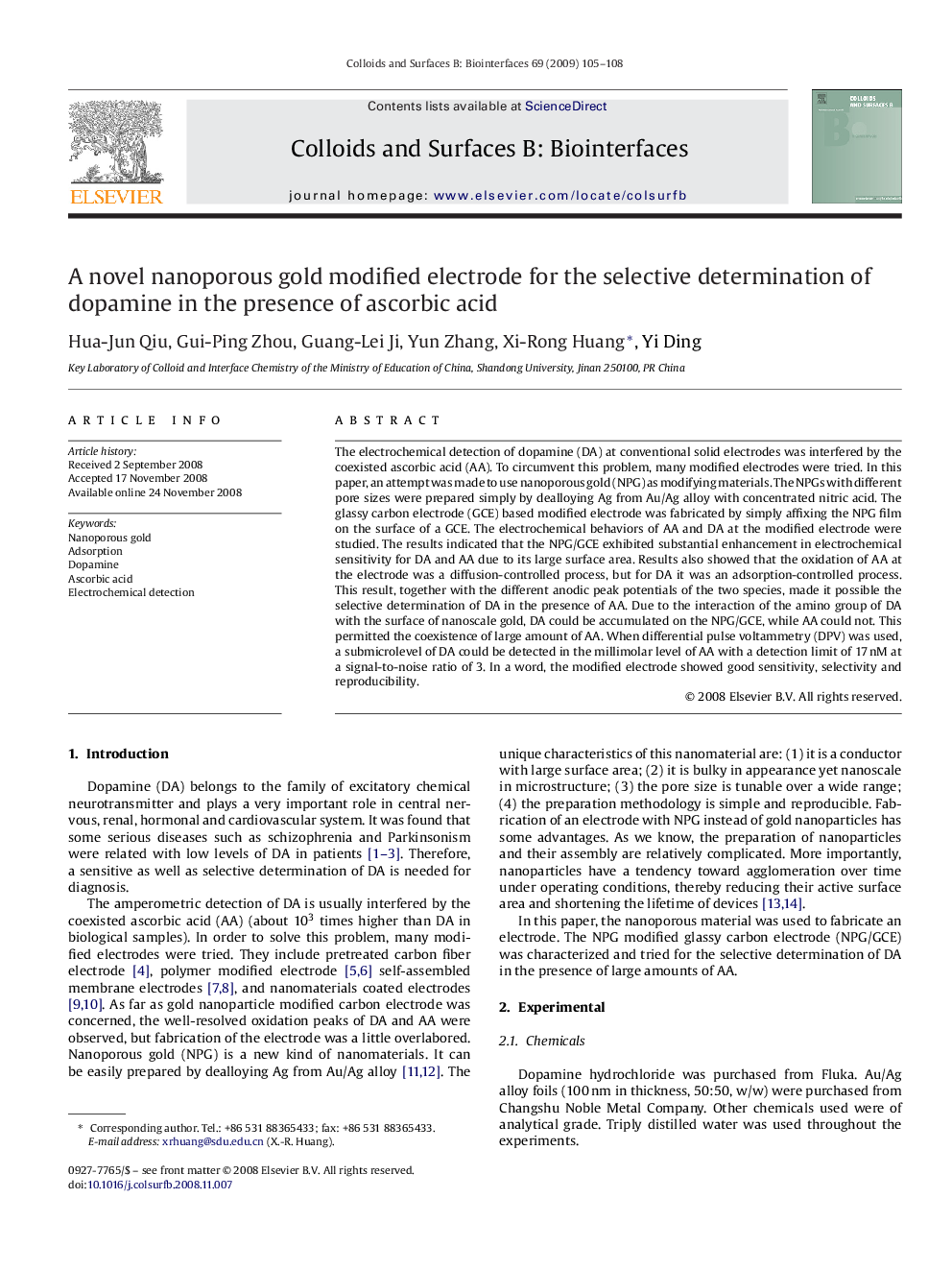| Article ID | Journal | Published Year | Pages | File Type |
|---|---|---|---|---|
| 601900 | Colloids and Surfaces B: Biointerfaces | 2009 | 4 Pages |
The electrochemical detection of dopamine (DA) at conventional solid electrodes was interfered by the coexisted ascorbic acid (AA). To circumvent this problem, many modified electrodes were tried. In this paper, an attempt was made to use nanoporous gold (NPG) as modifying materials. The NPGs with different pore sizes were prepared simply by dealloying Ag from Au/Ag alloy with concentrated nitric acid. The glassy carbon electrode (GCE) based modified electrode was fabricated by simply affixing the NPG film on the surface of a GCE. The electrochemical behaviors of AA and DA at the modified electrode were studied. The results indicated that the NPG/GCE exhibited substantial enhancement in electrochemical sensitivity for DA and AA due to its large surface area. Results also showed that the oxidation of AA at the electrode was a diffusion-controlled process, but for DA it was an adsorption-controlled process. This result, together with the different anodic peak potentials of the two species, made it possible the selective determination of DA in the presence of AA. Due to the interaction of the amino group of DA with the surface of nanoscale gold, DA could be accumulated on the NPG/GCE, while AA could not. This permitted the coexistence of large amount of AA. When differential pulse voltammetry (DPV) was used, a submicrolevel of DA could be detected in the millimolar level of AA with a detection limit of 17 nM at a signal-to-noise ratio of 3. In a word, the modified electrode showed good sensitivity, selectivity and reproducibility.
